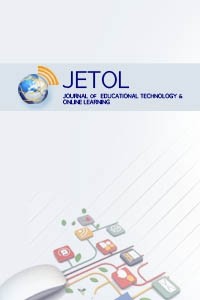Competition-based learning of blockchain programming
Competition-based learning of blockchain programming
blockchain programming, smart contract development, competition-based learning blockchain development,
___
- Nakamoto, S. (2008). Bitcoin: A peer-to-peer electronic cash system.
- Buterin, V. (2013). Ethereum White Paper: A Next Generation Smart Contract & Decentralized Application Platform. [Online]. Available: https://github.com/ethereum/wiki/wiki/White-Paper
- Dannen, C. Introducing Ethereum and Solidity: Foundations of Cryptocurrency and Blockchain Programming for Beginners. New York, NY, USA: Apress, 2017.
- Altin, H., Pedaste, M. Learning approaches to applying robotics in science education. Journal of Baltic Science Education, 12(3), 365–377, 2013.
- Chakraborty, P., Shahriyar, R., Iqbal, A., & Bosu, A. (2018, October). Understanding the software development practices of blockchain projects: A survey. In Proceedings of the 12th ACM/IEEE International Symposium on Empirical Software Engineering and Measurement (p. 28). ACM.
- Marchesi, M., Marchesi, L., & Tonelli, R. (2018, October). An agile software engineering method to design blockchain applications. In Proceedings of the 14th Central and Eastern European Software Engineering Conference Russia (p. 3). ACM.
- Jung, S. Experiences in Developing an Experimental Robotics Course Program for Undergraduate Education. IEEE Trans. Education, 56, 129-136, 2013.
- Paulik, M.J., Krishnan, N.M. A competition-motivated capstone design course: the result of a fifteen-year evolution.. IEEE Trans. Education, 44, 67-75, 2001.
- Paulik, M. J., Krishnan, M. An autonomous ground vehicle competition-driven capstone design course. Proc. 1999 Frontiers Educ. Conf. Nov 1999.
- Hyyppä, K. Competition - An Efficient Method to get Students Committed. ICALT, : IEEE Computer Society. ISBN: 0-7695-2181
- Plass, J. L., Homer, B. D., & Kinzer, C. K. (2015). Foundations of game-based learning. Educational Psychologist, 50(4), 258-283.
- Burguillo, J. C. (2010). Using game theory and competition-based learning to stimulate student motivation and performance. Computers & Education, 55(2), 566-575.
- Nash, J. F. (1950). Equilibrium points in n-person games. Proceedings of the national academy of sciences, 36(1), 48-49.
- Bergin, S., & Reilly, R. (2005). The influence of motivation and comfort-level on learning to program.
- Cagiltay, N. E., Ozcelik, E., & Ozcelik, N. S. (2015). The effect of competition on learning in games. Computers & Education, 87, 35-41.
- Hwang, G. J., Wu, P. H., Chen, C. C., & Tu, N. T. (2016). Effects of an augmented reality-based educational game on students' learning achievements and attitudes in real-world observations. Interactive Learning Environments, 24(8), 1895-1906.
- Çulha, D. Applying Competition-based Learning to Agile Software Engineering. Comput. Appl. Eng. Educ. doi: 10.1002/cae.21716, 2016
- Latih, R., Bakar, M. A., Jailani, N., Ali, N. M., Salleh, S. M., & Zin, A. M. (2018). Challenge-based programming learning design. International Journal on Advanced Science, Engineering and Information Technology, 8(5), 1912-1918.
- Chung, C. J. (2008, April). Learning through competitions–competition based learning (CBL). In LTUCTL Conference poster session.
- Bornstein, G., & Erev, I. (1994). The enhancing effect of intergroup competition on group performance. International journal of conflict management, 5(3), 271-283.
- Francese, R., Gravino, C., Risi, M., Scanniello, G., & Tortora, G. (2015). Using Project-Based-Learning in a mobile application development course—An experience report. Journal of Visual Languages & Computing, 31, 196-205.
- Desai, A., Tippins, M., & Arbaugh, J. B. (2014). Learning through collaboration and competition: incorporating problem-based learning and competition-based learning in a capstone course. Organization Management Journal, 11(4), 258-271.
- Swan, M. (2015). Blockchain: Blueprint for a new economy. " O'Reilly Media, Inc.".
- Myerson, R. B. (2013). Game theory. Harvard university press.
- Schwaber, K. Agile Project Management with Scrum, Washington, Microsoft Press, 2004.
- ISSN: 2618-6586
- Yayın Aralığı: Yılda 3 Sayı
- Başlangıç: 2017
- Yayıncı: Gürhan DURAK
The future of education according to the fourth industrial revolution
Competition-based learning of blockchain programming
Digital citizenship and its teaching: A literature review
Melody KAUMBA, Ramashego Shila Shorty MPHAHLELE, Gistered MULEYA, Francis SİMUİ
Factors influencing EFL students’ motivation in online learning: A qualitative case study
Reflective writing in the pandemic period: A university students’ reflection
